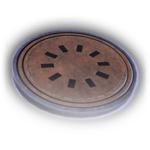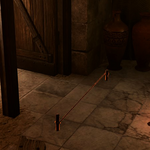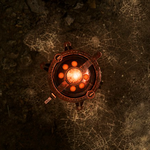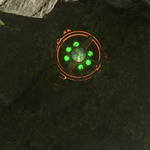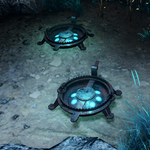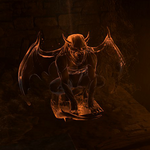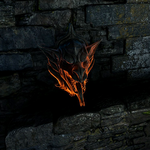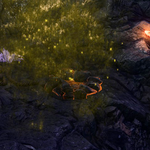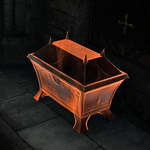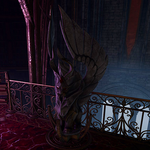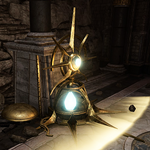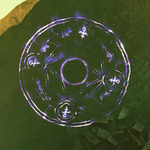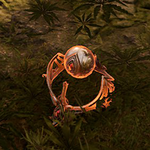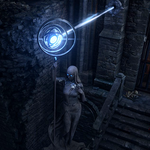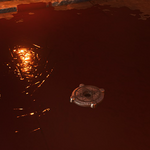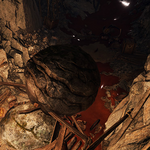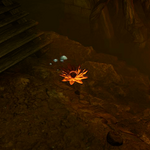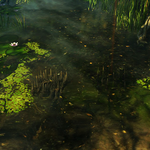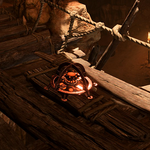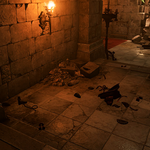More actions
This page is in the process of being constructed or reformatted. You are welcome to contribute as well. Last edited on 2024-11-21. If multiple days have passed since, this template should be removed. |
A trap is a hidden danger that can cause sudden unwanted conditions and/or damage.
Types of Traps
Most common types of traps that might be encountered in the game are:
- Tripwires
- Blast Mines (three kinds, causing
 Fire or
Fire or  Fire +
Fire +  Poison damage)
Poison damage) - Vents (various kinds spewing hot steam, toxic gas, spilling around Simple Toxin or Grease, or activating AoE spells like in their vicinity)
- Gargoyle Statues/Gargoyle Heads (firing Fire Bolts/Ice Bolts with certain frequency)
Gallery
Apart from that, there are multiple locations within the game featuring unique types of traps that do not appear anywhere else. These traps might inflict unique conditions as a result of failed save against them, and sometimes are themselves vulnerable only for a certain type of damage, being resistant to all other. Still, they can be Disarmed just like all other traps within the game.
Besides, some objects within the game might be guarded by a spell (apart from other measures of safety, f.e. a physical lock) and therefore recognized by party members as "trapped". Most often these are containers that store various items, either valuable or crucial for whatever quest. In some cases, triggering the trapped container without disarming it first may destroy it along with the precious item inside. Also, a trapped object might block the way to the target item or to the quest checkpoint.
Traps can be placed independently from one another or be combined in a system, when all elements might be triggered simultaneously after interacting with some detail of the environment, most commonly, stepping on a Marble Plate. In that case, a trigger item is recognized by characters as a trap, too, and Disaming it renders the whole system inactive.
The only type of a Trap available to be set by the player is a spell.
Involvement
The Perception skill is used to detect traps. This is a passive skill check performed whenever a party member comes close enough to an active, yet undetected, trap. Each party member makes a check independently, so if the check was failed by one party member, there's a chance that another one will be more lucky and successfully spot a trap.
To disarm a trap the player character needs to use their Sleight of Hand skill (requires a dice roll) along with a Trap Disarm Toolkit. If the roll was successful, the trap is disarmed (which is often visualized as bursting into further-inactive pieces), and the Trap Disarm Toolkit will not be spent. On failed or botched roll, the Trap Disarm Toolkit is spent, and the trap triggers.
Unlike Lockpicking, disarming a trap cannot be rerolled by simply spending another Trap Disarm Toolkit. Failed and botched rolls, though, can be rerolled using ![]() Inspiration points, like most other roll-based checks within the game.
Inspiration points, like most other roll-based checks within the game.
Some traps can be inactivated by certain means provided by the game plot, or simply destroyed physically by weapons' or magic attacks. Gas Vents can also be disabled by placing/throwing a heavy enough object on-top of them (to do this, the vent should first be successfully detected).
Some traps might be visible without a Perception check, but unless a character detects them they cannot be disarmed and can only be avoided.

